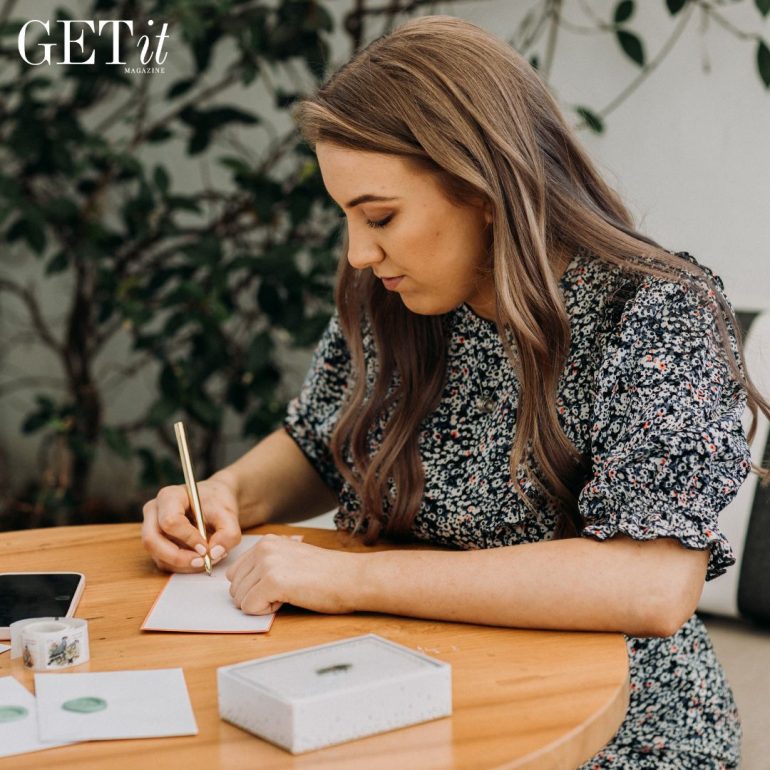Founder of Letters of Hope, Abbie Williams, has turned her own experiences with anxiety and depression into a powerful force for change. This remarkable initiative began as a simple passion project, and has now blossomed into a global movement that leverages handwritten letters to uplift individuals in their darkest moments.
Can you tell us more about your personal experience with anxiety and depression and how it led to the creation of Letters of Hope?
I started to struggle with anxiety and depression quite severely in my teenage years. I remember being in Year 6 and attending my high school open day. When I got home, I was physically sick from the anxiety that I had felt that day. That was the very first time I remember thinking ‘this has gone beyond butterflies in the stomach feeling’. Unfortunately, being so young, I didn’t have the confidence to ask for help so these symptoms got worse throughout my teenage years. I finally asked for help as an 18-year-old after having panic attacks at university and embarked on my own recovery journey.
What inspired you to start Letters of Hope and make it your mission to break the stigma around mental health?
In 2017, I moved from England to the Gold Coast. It was a huge step for me, and my mental health was put to the test.
Whilst navigating this, I was struggling being away from my family. We resorted to writing letters. I very quickly started to recognise how uplifting this was. Firstly, having something to look forward to. Secondly, the days a letter was there, they made me feel seen, cared for, loved, and not alone.
I decided that I wanted to be able to give that same feeling to other people who were struggling, and that is when I started Letters of Hope. It started very simply with me sharing a post around on social media and it grew from there.
Can you share a memorable or touching story of how a letter from Letters of Hope made a significant impact on someone’s life?
I remember one of the very first Letters of Hope I sent. Someone had reached out and shared that they were severely depressed to the point that they had not left the house, and barely left their bedroom, for weeks. I sent the letter off, and a couple of weeks later an email hit my inbox. Attached was a photo of the person holding up their letter of hope with a huge, beaming smile on their face. They let me know that on the day the letter arrived, they read it and finally left the house. They took themselves to see a movie and for a massage. That is the first time I think I realised that this simple act could lead to bigger impacts.
How do you select and train the individuals who write these letters, and what kind of messages do they typically include?
Anyone can register as a volunteer letter writer on our website. Most of our volunteers write from a place of lived experience which is incredibly impactful. We encourage people to speak from that place and to encourage the person they are not alone and help is out there.
Volunteers then send their letters to the Letters of Hope PO Box, I read each letter and match it to a recipient, and every envelope is packed with helplines, support contacts, and coping strategies to encourage that next step.
What has been the most rewarding aspect of your work with Letters of Hope so far, and what keeps you motivated to continue this endeavour?
This time last year we had 6 volunteers, and we now have 600. We have sent 2,800 letters to over 24 different countries. We have sent letters to people as young as 7 and as old as 96. Mental health conditions are not impacting one group of people, but every layer of society no matter what walk of life a person is from.
What are your long-term goals and aspirations for Letters of Hope? How do you envision the organization’s growth and impact in the future?
I look forward to seeing that movement continue. We have already started doing some work with schools to inspire our youth to value kindness and compassion as well as build mental health awareness. The plan for the future is to build on this further so we can reach more students and schools.
How can people get involved with or support Letters of Hope, either as volunteers or donors?
The best place to start is to head to our website: www.lettersofhope.care
From there, people can hit the ‘Request a Letter’ button to request a letter. They can also head to the volunteer page to register as a volunteer letter writer and get involved that way.
We also offer our Letter Writing Workshops and other keynote speaking engagements to workplaces, community groups, and anyone else who wants to hear our message!
What advice would you offer to individuals who want to help friends or family members struggling with their mental health but are unsure where to start?
Oftentimes, we get so worried to have the conversation that it may result in us not having the conversation at all. My best message for people is this: if you are coming from a place of genuine care and concern, it is very hard to get it wrong. That care and concern will often shine through and ensure that the person feels less alone.
In the context of your work, can you share some tips for practicing self-care and maintaining your own mental health as an advocate and founder of a mental health charity?
I recently also started a new self-care activity that I do every day. I created an album in the Photos app on my phone, and every day I take a photo of one thing that I am grateful for or that I find beautiful. I add it to the album. I now have an album that I can open up and look at when I feel down, that reminds me of all of the things I am grateful for in the world.
I think it is also important that we ask for help. Speak to someone that you trust when you are struggling. We have come such a long way and most people are supportive, understanding, and compassionate.





